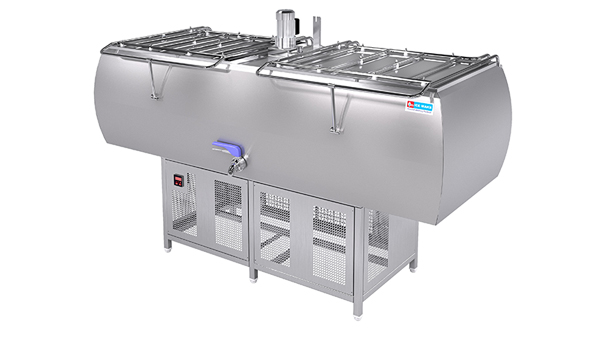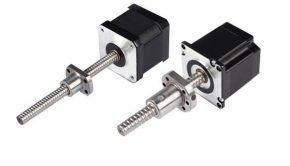Process cooling and the dairy industry
Ensuring milk, yoghurt, cheese and other produce are at the correct temperature is critical in the dairy industry in order to minimize waste. Milk chillers work to eliminate excess heat at important milestones throughout its production, such as the pasteurization process.
It is a heat treatment process that removes dangerous bacteria, allowing the produce to be stored for much longer periods. To do so, the milk must be heated to up to 212 Fahrenheit to stop the bacteria from duplicating. It then requires fast cooling in order to stop the produce from being damaged.
Integral to this process are dairy chillers, as they are able to bring the temperature of the milk down enough to preserve it as it is transported to be bottled.
What is the pasteurization process?
Temperature plays an important role in creating dairy produce that is safe for human consumption. During the process, milk is passed through a range of cold and hot temperatures in order to kill off dangerous pathogens, as well as to preserve proteins and nutrients.
There are two different pasteurization methods that are utilized in the global dairy industry. These are:
- High Temperature, Short Time (HTST)
This method is used in the United States and Canada. It works by heating milk up to 161 Fahrenheit for 15 seconds in order to kill off any harmful pathogens and take away unwanted enzymes. Then the milk is process cooled very quickly down to 39 Fahrenheit in order to preserve the desired enzymes and to stop the dangerous pathogens from coming back. The finished produce needs to be kept refrigerated and has a 2 week shelf life.
- Ultra High Temperature (UHT)
This method is used in Europe. It works by heating milk up to 280 Fahrenheit for 2 seconds in order to kill off any harmful pathogens and take away unwanted enzymes. Then the milk is process cooled, whilst being sealed air tight, down to 39 Fahrenheit in order to preserve the desired enzymes and to stop the dangerous pathogens from coming back. The finished produce does not need to be kept refrigerated and has a shelf life of between 6 – 9 months. However, it does sometimes have a slight ‘cooked’ flavor to it.
What dairy cooling solutions are available?
A dairy chiller is vital in the controlling of heat. If the milk gets too hot it is spoilt. This is the same for cheese also. However, if it does not get enough heat it prevents the pasteurization process from working optimally.
To help with this there are a number of solutions available within the dairy industry – which you can learn more about here: https://northslopechillers.com/process-cooling/dairy/. These include storage tanks with jackets and process chillers. Within the dairy industry, coolant is required to draw the heat from out of the milk in order to drop the temperature to the necessary level.
Type of dairy chillers
When inspecting the type of chillers that can be used for dairy produce there are two main categories. These are:
Vapor compression – The most common type and include both water chillers and air chillers. They use an electric driven mechanism to push a refrigerant through the system.
Vapor absorption – They use heat to push a refrigerant around the system.
As stated, vapor compression chillers are the most common types used within the dairy industry and are placed into two sub category types:
Water chillers – They work by removing heat through the pumping of water, or another fluid, through a condenser and dispersing it through a cooling tower. These chillers are more efficient than air cooled chillers. Thanks to water’s high heat capacity, the process of using water evaporation to dissipate heat is far more energy efficient than blowing cool air across a hot surface. Traditionally, these chillers last longer than air chillers as well.
Air chillers – They work by using air to get rid of the heat. Fans blast cool air across the tubes of the condenser to cool it down. This method is much less energy efficient than the water cooling method. These chillers are ideal for when it comes to static cooling. They are very easy to install and can even be installed on the outside of a building, saving space on the inside. However, they are more likely to experience issues with recirculation and blockages than water chillers.
Despite the stated differences, the two types of chillers are actually made up of the same components, which include an expansion valve, an evaporator, a compressor, and a condenser. The mechanics of the two chiller types are also extremely similar.
The compressor starts the refrigeration cycle and begins so by pushing the refrigerant through to the condenser. During this process the low temperature and low pressure refrigerant is compressed and changed into a high temperature and high pressure gas. Whilst in the condenser air or water flows over the coils to remove any heat from the refrigerant. The refrigerant condenses at this point as it loses heat and turns into a liquid form. After leaving the condenser, the refrigerant goes through the expansion valve where it is restricted. Once through the valve, the refrigerant goes into the evaporator where it then begins to evaporate back into a gas state. During this process it gets super cold and absorbs a large amount of heat. This heat is removed from the fluid and transferred in to the refrigerant. This will then enter the compressor and the entire cycle starts over again.
The types of compressors the chiller can utilize are sub categorized as the following:
- Reciprocating chillers – Use a chamber and pistons.
- Scroll compressor chillers – Utilizes one rotating plate and a stationary plate.
- Screw driven chillers – Ideal for medium to smaller loads.
- Centrifugal chillers – Mostly water chillers that utilize this.
What are the benefits of a dairy chiller solution?
An effective and robust dairy chiller solution is easy and simple to install, and will work to save time, lower operational costs, save energy and water, and most importantly improve the quality of the product.
















